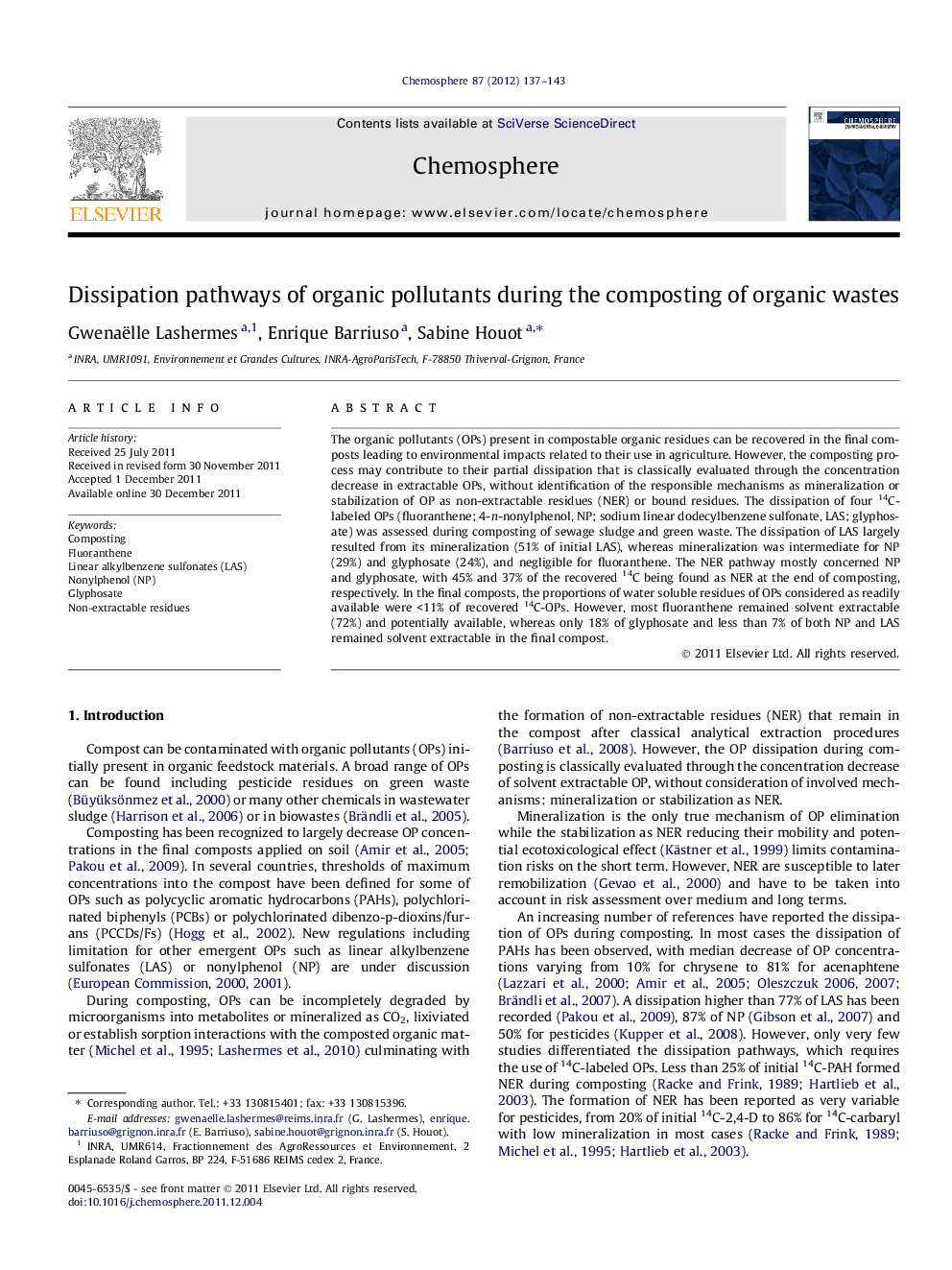| کد مقاله | کد نشریه | سال انتشار | مقاله انگلیسی | نسخه تمام متن |
|---|---|---|---|---|
| 4409987 | 1307521 | 2012 | 7 صفحه PDF | دانلود رایگان |

The organic pollutants (OPs) present in compostable organic residues can be recovered in the final composts leading to environmental impacts related to their use in agriculture. However, the composting process may contribute to their partial dissipation that is classically evaluated through the concentration decrease in extractable OPs, without identification of the responsible mechanisms as mineralization or stabilization of OP as non-extractable residues (NER) or bound residues. The dissipation of four 14C-labeled OPs (fluoranthene; 4-n-nonylphenol, NP; sodium linear dodecylbenzene sulfonate, LAS; glyphosate) was assessed during composting of sewage sludge and green waste. The dissipation of LAS largely resulted from its mineralization (51% of initial LAS), whereas mineralization was intermediate for NP (29%) and glyphosate (24%), and negligible for fluoranthene. The NER pathway mostly concerned NP and glyphosate, with 45% and 37% of the recovered 14C being found as NER at the end of composting, respectively. In the final composts, the proportions of water soluble residues of OPs considered as readily available were <11% of recovered 14C-OPs. However, most fluoranthene remained solvent extractable (72%) and potentially available, whereas only 18% of glyphosate and less than 7% of both NP and LAS remained solvent extractable in the final compost.
► The dissipation pathway of 14C-organic pollutants varies during composting.
► Total mineralization as CO2 explains linear alkylbenzene sulfonate dissipation.
► The formation of non-extractable residues also involved in nonylphenol dissipation.
► Both pathways involved for glyphosate and very little dissipation for fluoranthene.
► The proportion of easily available pollutant is always low in the final compost.
Journal: Chemosphere - Volume 87, Issue 2, April 2012, Pages 137–143